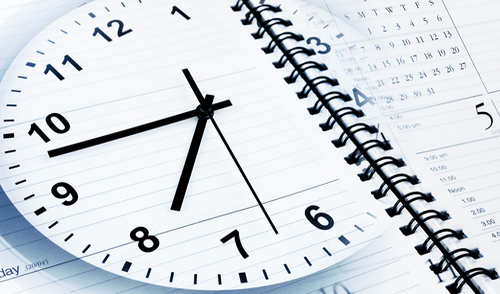Sleep is not merely “time out” from daily life. It is an essential element for mental and physical restoration. Millions of Americans of all ages, however, regularly fail to get a good night’s sleep. One such group is those suffering from a “parasomnia.” Parasomnia is a term used to describe disruptive sleep-related events. These behaviors and experiences generally occur during sleep, and in most cases are infrequent and mild. At times they may occur often enough or become so bothersome that medical attention is necessary.
What are the major groups of parasomnias and their general cause?
There are four major groups and they are: (1) arousal disorders; (2) sleep-wake transition disorders; (3) REM sleep associated disorders; and (4) other parasomnias. Many of the parasomnias are behaviors and experiences activated by the central nervous system.
What are parasomnia arousal disorders?
he most common of the parasomnias are arousal disorders and they include: (1) confusional arousals, sleepwalking, and sleep terrors. Experts believe that the various arousal disorders are related and share some characteristics. Essentially, these occur when a person is in a mixed state, both asleep and awake, and often emerging from the deepest stage of non-dreaming sleep. The sleeper is awake enough to act out complex behaviors, but is still asleep and not aware of or able to remember these activities.
- Confusional Arousals – They are most common in infants and toddlers, but also seen in adults. It begins with crying and thrashing around in bed with the sleeper appearing confused and upset, but resisting attempts to comfort or console. Lasting up to half an hour, the sleeper is hard to awaken during the episode, but usually the sleeper will awaken and want to return to sleep.
- Sleepwalking – Commonly seen in older children, sleepwalking can range from simply getting out of bed and walking around the bedroom to prolonged and complex actions, such as going to another part of the house or outside. These events rarely indicate any serious underlying medical or psychiatric problem and rarely cause injuries, however, simple precautions can enhance safety.
- Sleep-Related Eating – This rare disorder of eating during sleep, without conscious awareness, can occur often enough to result in significant weight gain. Although it can affect both sexes and all ages, it is most common in young women.
- Sleep Terrors – The most extreme and dramatic of the arousal disorders, sleep terrors often begin with a “blood-curdling” scream or shout, and can produce signs that suggest extreme terror, such as dilated pupils, rapid breathing, racing heart, sweating, and extreme agitation. During an episode, the victim may bolt out of bed and run around the room or even out of the house, possibly hurting themselves during this frenzied event. The sleeper generally does not remember it upon awakening.
What are sleep-wake transition disorder parasomnias?
These disorders occur in the transition from wakefulness to sleep, or from sleep to wakefulness, or, more rarely, in sleep stage transitions. All of these disorders can occur often or to a severe degree in otherwise healthy persons and can lead to discomfort, pain, embarrassment, anxiety, or disturbance of a bedpartner’s sleep. These parasomnias include: (1) rhythmic movement disorder; (2) sleep starts; (3) sleep talking; and (4) nocturnal leg cramp.
- Rhythmic-Movement Disorder – The most commonly recognized of this sub-group is headbanging, headrolling, and bodyrocking. Rhythmic humming or chanting may accompany these movements and may be quite loud.
- Sleep Starts – A sudden brief jerk or contraction that sometimes are associated with the sensation of falling, a sensory flash, or a visual dream or hallucination. A sharp cry may occur and the subject may not recall the jerk or contraction.
- Sleep Talking – Talking during sleep may be an annoyance to bedpartners or other household members, but the sleeper is usually unaware or unaffected by this disorder. Usually the sleep talking is brief, infrequent, and devoid of signs of emotional stress.
- Nocturnal Leg Cramps – This disorder causes painful sensations in the calf of the leg or in the foot during sleep, one or two episodes nightly, several times a week. The cramp can usually be relieved by local massage, heat, or movement of the affected limb.
What are parasomnias usually associated with REM sleep?
These parasomnias typically are associated with the REM sleep stage. They include nightmares, sleep paralysis, sleep-related painful erections, REM sleep-related sinus arrest, and REM sleep-behavior disorder.
- Nightmares – Frightening dreams that usually awaken the sleeper from REM sleep.
- Sleep Paralysis – A period of time either at sleep onset or upon awakening where the victim is unable to move.
- Sleep-Related Painful Erections – This disorder is characterized by penile pain that occurs during erections, typically during REM sleep.
- REM Sleep Sinus Arrest – This is a cardiac rhythm disorder and causes sinus arrest during REM sleep in otherwise healthy individuals.
- REM Sleep Behavior Disorder – Punching, kicking, leaping and running from the bed during attempted dream enactment will occur on a frequent basis and medical attention is usually sought after injury has occurred to either the person or bedpartner.
What are miscellaneous parasomnias?
They are sleep bruxism (teeth grinding), sleep enuresis (bed-wetting), sleep-related abnormal swallowing syndrome (choking), nocturnal paroxysmal dystonia (seizures), sudden unexplained nocturnal death syndrome (sudden unexplained death in adults), primary snoring (non-apneic snoring), infant sleep apnea, congenital central hypoventilation syndrome (breathing cessation), sudden infant death syndrome (unexplained death in infants), and benign neonatal sleep myoclonus (limb jerks in neonatals).
When should a parasomnia be medically treated?
While some parasomniacs do not require medical treatment, a victim should seek a medical evaluation when: (1) potentially dangerous behavior could cause injury or health hazards; (2) extreme disturbances are creating hardships on other family members; and (3) excessive sleepiness is experienced during the day.
In some cases these disorders can be triggered by other conditions, such as sleep apnea, heartburn, or periodic limb movements. Therapy can include medical intervention with prescription drugs, or behavior modification through hypnosis or relaxation/mental imagery.




 Take the simple test to find out if you could have a sleep disorder.
Take the simple test to find out if you could have a sleep disorder.
 Do you fall asleep more easily than others? Take this simple test to find out if you are excessively sleepy.
Do you fall asleep more easily than others? Take this simple test to find out if you are excessively sleepy.